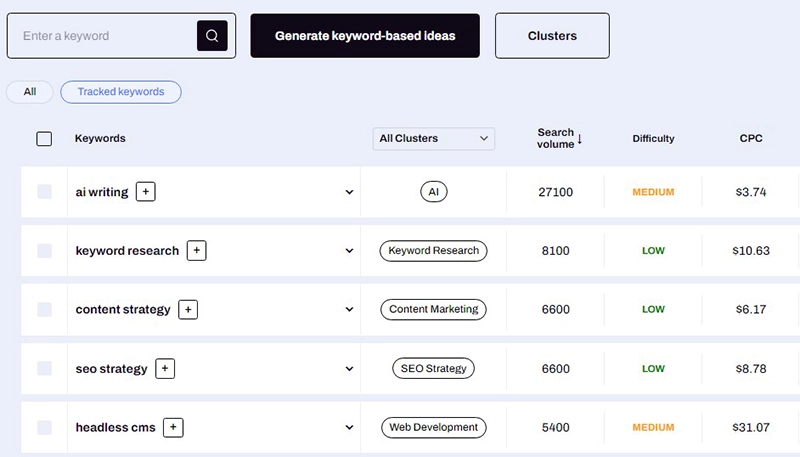Ever found yourself lost in a maze of content, unsure of where to go next? Imagine if all the information you needed was neatly organized, guiding you effortlessly from one piece to another. That’s the magic of a topic cluster content strategy. But what exactly is it, and why should you care? Let’s dive in and unravel this powerful approach to content creation.
The Basics of Topic Clusters
At its core, a topic cluster is a method of organizing content around a central theme. Think of it as a hub-and-spoke model. The central hub, or pillar content, covers a broad topic comprehensively. Surrounding this hub are the spokes, or subtopic content, which delve into specific aspects of the main topic. This structure not only makes your content more accessible but also enhances the user experience by providing a clear path for readers to follow.
For instance, if your pillar content is about “SEO strategies,” your subtopics might include “keyword research,” “on-page SEO,” and “link building.” Each subtopic links back to the pillar content, creating a cohesive network of information. This interconnected approach ensures that readers can easily navigate through related content, deepening their understanding of the main topic.

The Role of Pillar Content
Pillar content is the foundation of your topic cluster. It’s a comprehensive, in-depth piece that covers a broad subject area. Think of it as the ultimate guide or the go-to resource for anyone interested in that topic. Pillar content is typically longer and more detailed than regular blog posts, often exceeding 2,000 words.
Creating effective pillar content requires thorough research and a deep understanding of the subject matter. It should address common questions, provide valuable insights, and offer actionable advice. The goal is to establish your pillar content as an authoritative resource that readers will return to time and again.
For a step-by-step guide on creating pillar content, check out this article on How to Create a Content Cluster.
How Subtopic Content Supports the Main Topic
Subtopic content plays a crucial role in supporting and expanding upon the main topic covered in your pillar content. These are shorter, more focused pieces that dive into specific aspects of the broader subject. Each subtopic article links back to the pillar content, reinforcing the central theme and providing additional context.
For example, if your pillar content is about “content marketing,” your subtopics might include “creating a content calendar,” “measuring content performance,” and “content promotion strategies.” By linking these subtopics to the pillar content, you create a web of interconnected articles that guide readers through a comprehensive exploration of the main topic.
This approach not only enhances the user experience but also boosts your SEO efforts by creating a network of internal links that search engines can easily crawl and index.
Benefits of a Topic Cluster Content Strategy
Implementing a topic cluster content strategy offers several key benefits:
- Improved SEO: By organizing your content into clusters, you create a clear structure that search engines can easily understand and index. This can lead to higher search rankings and increased organic traffic.
- Enhanced User Experience: Topic clusters provide a logical path for readers to follow, making it easier for them to find the information they need. This can lead to longer time on site and higher engagement rates.
- Authority Building: Comprehensive pillar content establishes your site as an authoritative resource on a given topic, which can build trust with your audience and attract more backlinks.
- Content Efficiency: By focusing on a central theme and related subtopics, you can streamline your content creation process and ensure that all your articles work together to support your overall content strategy.
Steps to Implement a Topic Cluster Strategy
Ready to get started with your own topic cluster content strategy? Follow these steps:
- Identify Your Core Topics: Start by identifying the broad topics that are most relevant to your audience and business goals.
- Create Pillar Content: Develop comprehensive, in-depth articles that cover each core topic in detail.
- Generate Subtopic Ideas: Brainstorm specific subtopics that relate to each pillar content. These should be narrower in focus and provide additional insights or information.
- Link Strategically: Ensure that each subtopic article links back to the relevant pillar content and vice versa. This creates a network of interconnected articles that support each other.
- Monitor and Adjust: Regularly review your topic clusters to ensure they remain relevant and up-to-date. Adjust your strategy as needed based on performance metrics and audience feedback.
For a more detailed guide on creating and implementing a topic cluster strategy, you can refer to this article on Searchengineland: How to Create, Measure, and Analyze Topic Clusters.
Topic Clusters and SEO: What You Need to Know
Topic clusters are a game-changer when it comes to SEO. By organizing your content into clusters, you create a clear structure that search engines can easily understand and index. This can lead to higher search rankings and increased organic traffic.
One of the key benefits of topic clusters is the internal linking structure they create. By linking subtopic content to pillar content and vice versa, you create a network of interconnected articles that search engines can easily crawl. This not only helps search engines understand the relationship between your articles but also distributes link equity throughout your site, boosting the SEO value of all your content.
Additionally, topic clusters can help you target a wider range of keywords. While your pillar content may target broad, high-volume keywords, your subtopic content can target more specific, long-tail keywords. This allows you to capture a broader audience and drive more targeted traffic to your site.
Conclusion
In a nutshell, a topic cluster content strategy is a powerful way to organize your content, improve your SEO, and enhance the user experience. By creating comprehensive pillar content and supporting it with focused subtopic articles, you can build a cohesive network of information that guides readers through a deep exploration of your core topics.
Ready to take your content strategy to the next level? Start by identifying your core topics, creating in-depth pillar content, and generating subtopic ideas. With a well-structured topic cluster strategy, you’ll be well on your way to building a more organized, engaging, and SEO-friendly website.
If you found this article helpful, be sure to share it with your network or explore more resources on our blog. And if you have any questions or need further assistance, don’t hesitate to reach out to us at WP SEO AI. We’re here to help you succeed in your content and SEO efforts!


